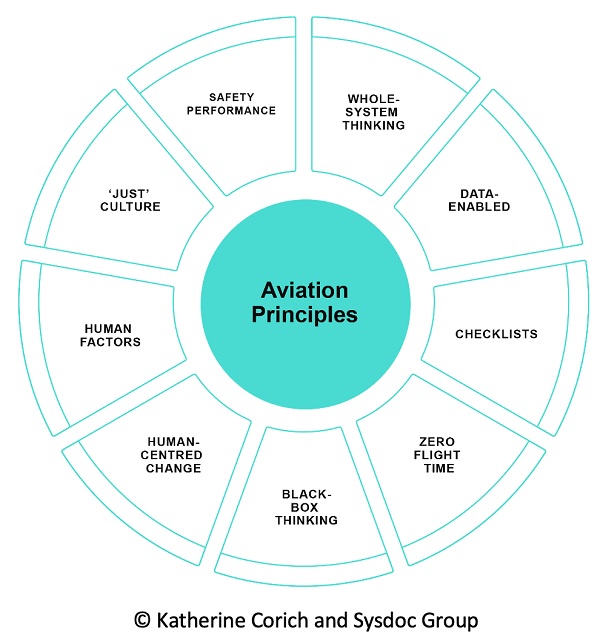Framework 112 Aviation Principles (Landing Successful Change)
Introduction
Using the principles of aviation to strengthen change programs.
Need to realise that there is no one change management approach that works for all situations.
"...there is not necessarily one approach that is better than another: rather it is important to understand the change is a process and you need to take an organisation through a number of stages as they prepare for change......people use the question why is it necessary. It is not the process itself that determine success; it is how you do it..."
Katherine Corich, 2021
At an individual level, people go through change at varying paces and degrees of easiness. The ultimate goal is to help them embrace change.
This framework looks at the different challenges that emerge during change programs, ie from outright resistance, handling difficult conversations, etc. An important part is continual debriefing
Katherine Corich, 2021)
3. Checklists (checklists for safety; information repetition is an additional safety check)
4. Zero flight time (using full-motion simulator for training to increase competencies, experience and knowledge)
5. Black box thinking (access to a large amount of data and information including conversations; provide a historical perspective on performance, etc)
6. Human-centred change (understanding the human issues)
7. Human Factors (understanding how people will perform in the current environment and will perform in the new environment, ie mentally, physically, socially, etc)
8. Just culture (creating a safe place or culture where people can openly, and without fear, express their concerns, like areas that need improvement, future issues can be addressed, etc )
9. Safety Performance (this is the dominant concern)
In summary
Like landing plane on an aircraft carrier mid-ocean
"...you need your team 100% aligned with you, precision, accurate data, and a deep understanding of the movements and tasks at hand..."
Katherine Corich, 2021

